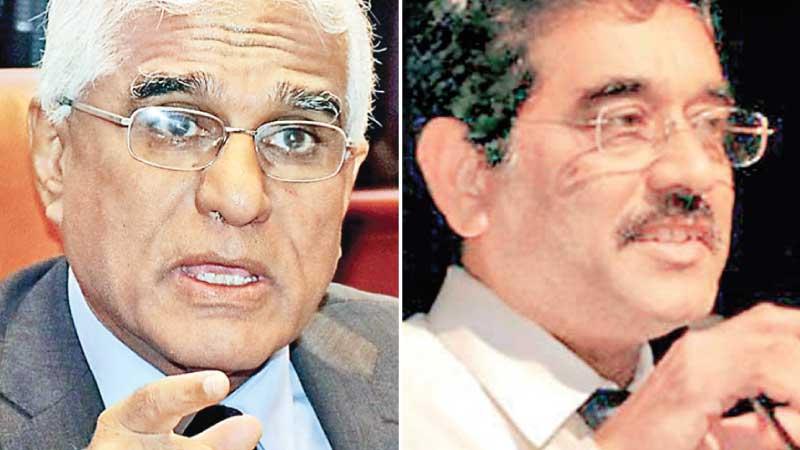
The Central Bank will be firm and if necessary impose lending caps against banks which maintain rigidity in lending rates, failing to comply with the direction issued to slash interest rates, Central Bank Governor Dr. Indrajit Coomaraswamy told the media at the fifth Monetary Policy Review of the Central Bank last week.
“Clear directions have been issued to institutions to reduce market interest rates translating to lower interest rates. However, this is not being adhered to by several institutions. Therefore, the Monetary Board will monitor market lending rates closely,” the governor said, adding that if lending rates are not reduced according to the specified timelines, market caps will be imposed.
The Central Bank cut the Standing Deposit Facility Rate (SDFR) and the Standing Lending Facility Rate (SLFR) by 50 basis points to 7.00 percent and 8.00 percent respectively, a move that was not ruled out by analysts given the sluggish growth recorded during the year. However, the Statutory Reserve Rate (SRR) remains unchanged.
“The Monetary Board though it should take stock of how Monetary Policy should evolve and see the impact of the decision taken to cut rates.
“All these measures are intended to take into account how monetary policy will be formulated going forward,” Dr. Coomaraswamy said. However, he also noted that any rate cap, for that matter, is not a good move, but, if it is necessary “we will impose caps if banks fail to comply with the directions. “We will work out with individual institutions on the time frame to comply and if they fail fall in line, the next parameter will be to impose a ceiling on lending rates,” the Governor said, adding that despite clear instructions issued to banks there has not been full compliance yet.
The Central Bank decided to cut key policy rates, taking into account the current and expected developments in the domestic and the financial markets as well as the global economy, to spur economic growth.
The Bank cut rates by 50 basis points in May and maintained the SDFR at 7.50 percent and SLFR at 8.50 percent at its last policy review.
“We are in no way asking banks to tighten margins but only to reduce lending rates,” Central Bank Deputy Governor Dr. Nandalal Weerasinghe said, adding that since imposing caps on deposits there has been a certain amount of re-pricing of stocks.
However, financial experts said while a rate cut is an appropriate move at a time when growth prospects look gloomy, it could also put pressure on the rupee resulting in foreign outflows from the government securities market. On growth projection, he said second quarter growth this year will end up a little over 2 percent and the full year’s growth will be around 3.1 percent. However, the figures are speculative until the real growth rates are made known by the Census and Statistics Department.
Economic growth slowed down to a 17-year low of 3.2 percent last year. Economists predict growth to be less than three percent this year given the unfavourable conditions in the country.
“Subdued inflation which has been well anchored and a 4-6 percent range target in the medium term is another reason for the Central Bank to cut key policy rates,” the Deputy Governor said.
Headline inflation remained low in recent months, partly driven by subdued food prices.
Although recent upward adjustments to fuel prices and administratively determined prices of certain commodities could exert certain transitory price pressure in the near term, inflation is likely to remain around the mid single digit level during the remainder of the year, the Central Bank stated.
With regard to the new Monetary Law Act (MLA) which is currently at the Cabinet office, the Governor said the MLA will be a vital piece of legislation to improve consistency and predictability of laws which is lacking in the country. The Central Bank said it will be issuing Samurai Bonds in Japan in October, a good time for the market, enabling Sri Lanka to tap the Japanese bond market.
The regulator at its last Monetary Policy Review media briefing said that it would raise US$ 500 million by issuing Panda (Chinese bonds) and Samurai bonds soon to support the financing of foreign debt .
The trade deficit contracted by around US$ 2.1 billion during the first half of the year with sustained growth in exports and a notable reduction in the growth of imports.
The number of tourist arrivals which had been impacted by the Easter attacks increased to 115,701 in July from 63,072 in the previous month. Foreign remittances too increased in June. The rupee has appreciated against the US dollar by 2.4 percent so far during the year although some depreciation pressure was experienced during the past few days. “The depreciation pressure mainly driven by foreign withdrawals from the government securities market by a few investors will be short-lived,” Dr. Weerasinghe said.
